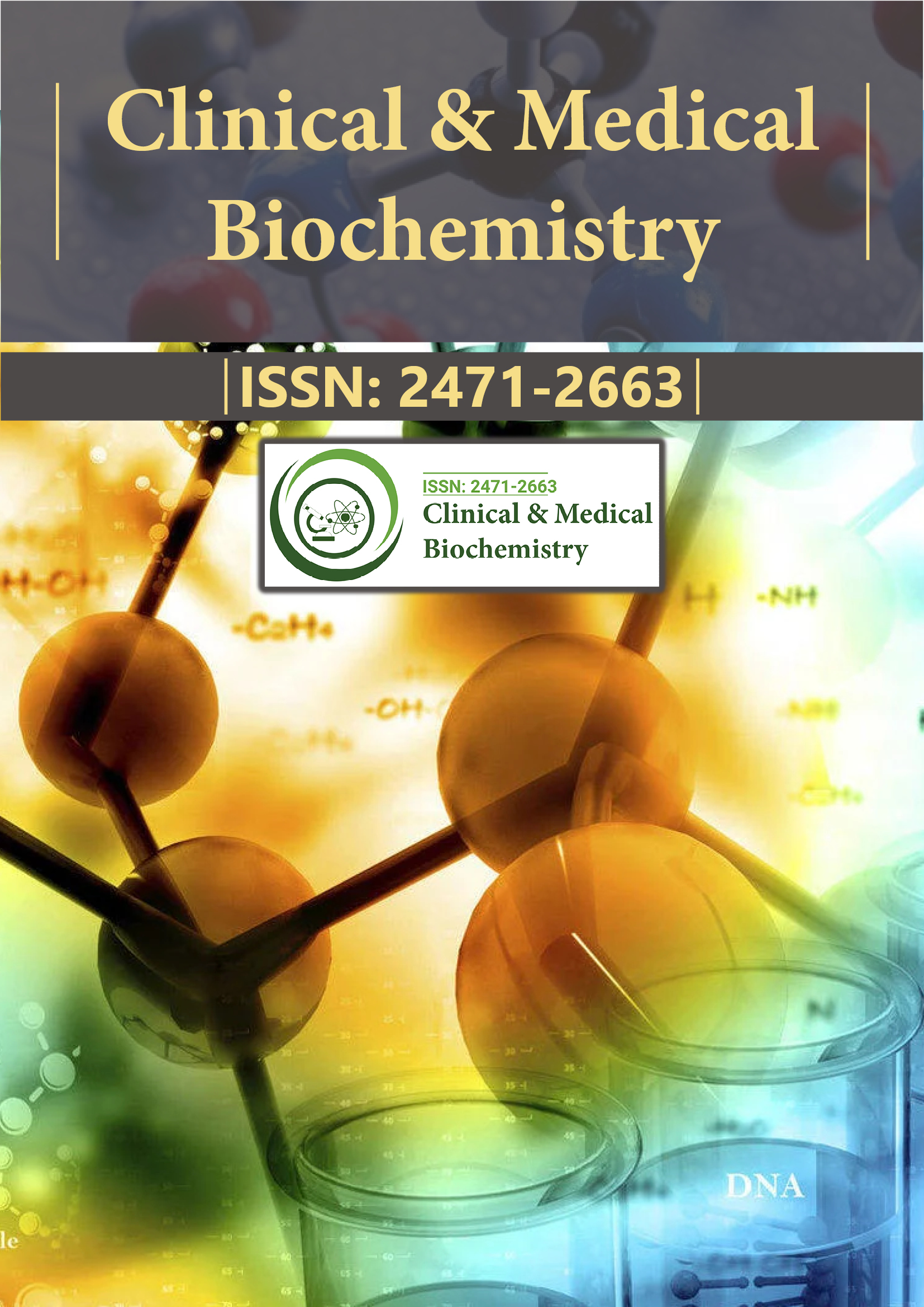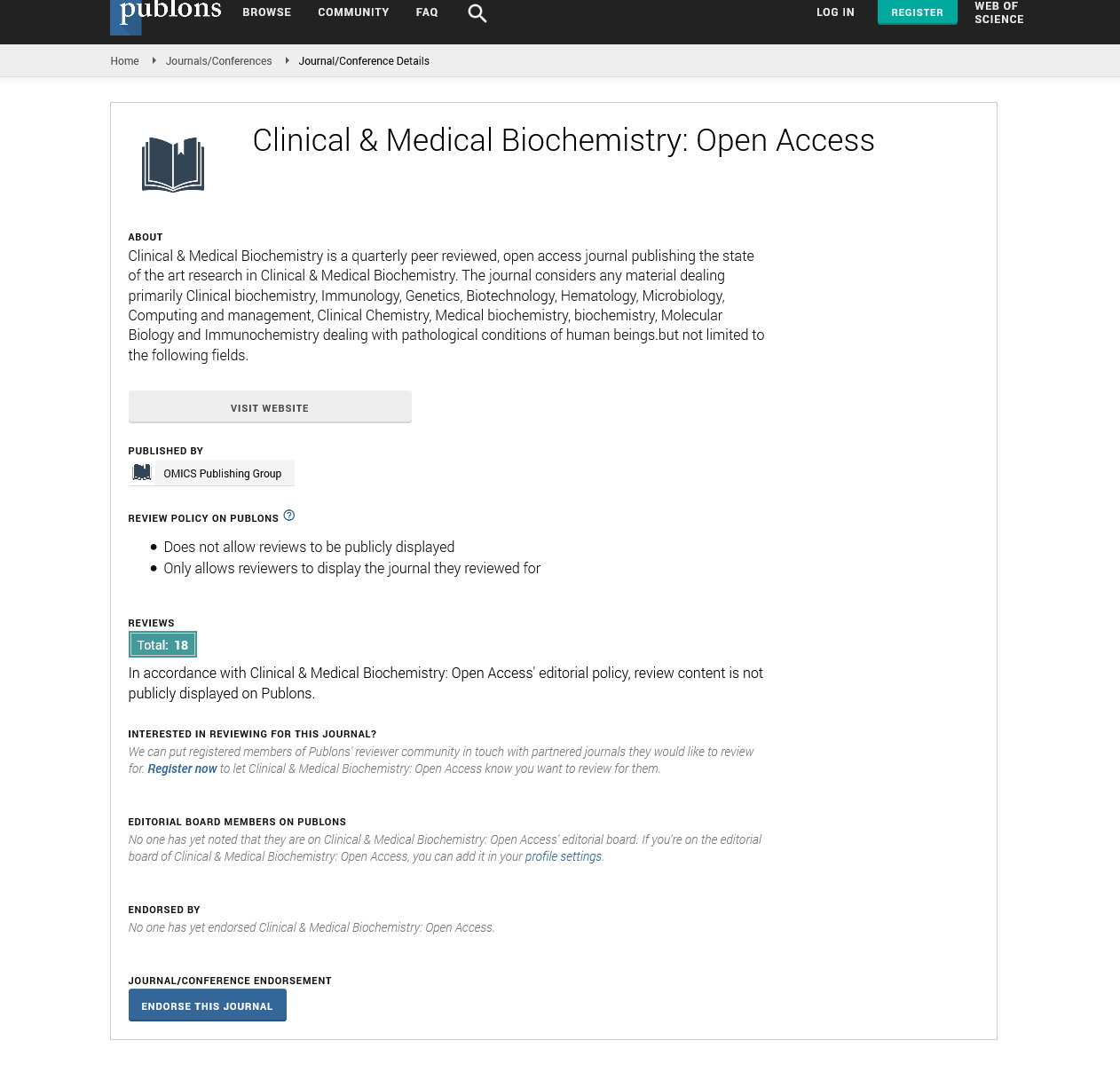Indexed In
- RefSeek
- Directory of Research Journal Indexing (DRJI)
- Hamdard University
- EBSCO A-Z
- OCLC- WorldCat
- Scholarsteer
- Publons
- Euro Pub
- Google Scholar
Useful Links
Share This Page
Journal Flyer

Open Access Journals
- Agri and Aquaculture
- Biochemistry
- Bioinformatics & Systems Biology
- Business & Management
- Chemistry
- Clinical Sciences
- Engineering
- Food & Nutrition
- General Science
- Genetics & Molecular Biology
- Immunology & Microbiology
- Medical Sciences
- Neuroscience & Psychology
- Nursing & Health Care
- Pharmaceutical Sciences
Commentary - (2025) Volume 11, Issue 1
Liver Function Tests: Vital Insights into Liver Health and Disease Management
Oshan Abu*Received: 26-Feb-2025, Manuscript No. CMBO-25-29233; Editor assigned: 28-Feb-2025, Pre QC No. CMBO-25-29233; Reviewed: 14-Mar-2025, QC No. CMBO-25-29233; Revised: 21-Mar-2025, Manuscript No. CMBO-25-29233; Published: 28-Mar-2025, DOI: 10.35841/2471-2663.25.11.244
Description
Liver Function Tests (LFTs) are a collection of blood tests used to evaluate the health and functionality of the liver, an essential organ responsible for various critical roles in the body. These roles include detoxifying harmful substances, producing important proteins, aiding digestion through bile production, regulating blood clotting and storing nutrients. When the liver is injured or diseased, it often releases certain enzymes and proteins into the bloodstream or its ability to produce vital compounds may be impaired. Liver function tests measure these substances to provide valuable insight into liver condition and performance.
Doctors commonly order LFTs when a patient exhibits symptoms suggestive of liver disease, such as jaundice which causes yellowing of the skin and eyes, fatigue, dark urine, pale stools, nausea, abdominal pain, or swelling. These tests are also regularly used to monitor chronic liver diseases, assess liver damage caused by alcohol or medications and check for liver involvement in systemic illnesses. LFTs may be included as part of a routine metabolic panel or requested separately based on clinical indications.
The primary components measured in liver function tests include enzymes like Alanine Aminotransferase (ALT) and Aspartate Aminotransferase (AST), Alkaline Phosphatase (ALP), Gamma-Glutamyl Transferase (GGT), bilirubin (both total and direct), albumin and total protein. ALT and AST are enzymes found predominantly in liver cells and elevated levels usually indicate liver cell damage or inflammation. ALT is considered more liver-specific, while AST can also increase due to muscle or heart disease, making the combined assessment of both enzymes important for diagnostic accuracy.
Alkaline phosphatase is an enzyme linked to the bile ducts and bones. High ALP levels can point to bile duct obstruction, liver disease, or bone disorders. Gamma-glutamyl transferase is another enzyme that tends to rise in cases of bile duct disease and chronic alcohol consumption. Elevated GGT, especially when seen together with increased ALP, often suggests bile duct-related liver conditions.
Bilirubin, a yellow pigment produced during the breakdown of red blood cells, is processed by the liver and excreted in bile. It exists in two forms: unconjugated (indirect) and conjugated (direct). Total bilirubin measures the sum of both forms. Elevated bilirubin levels can indicate liver dysfunction, bile duct blockage, or excessive red blood cell breakdown (hemolysis).
Albumin, the main protein produced by the liver, plays a crucial role in maintaining fluid balance in the bloodstream. Low albumin levels may suggest chronic liver disease, malnutrition, or kidney problems. Total protein measures the overall amount of proteins in the blood, including albumin and globulins, and helps assess the liver's ability to synthesize proteins.
It is important to recognize that abnormal liver function test results do not necessarily imply severe or permanent liver damage. Temporary elevations in liver enzymes or bilirubin can occur due to various factors such as infections, medication effects, alcohol intake, strenuous exercise, or reversible fatty liver changes. However, persistent or markedly elevated levels typically warrant further investigation to identify the underlying cause and determine appropriate treatment. Physicians often interpret liver function test patterns to classify liver issues as hepatocellular (mainly affecting liver cells), cholestatic (involving bile flow obstruction) or mixed. This classification assists in guiding further diagnostic evaluation and management strategies.
Performing liver function tests is generally safe, straightforward and quick, requiring only a routine blood draw. Typically, no special preparation is needed, though patients may be advised to avoid food, alcohol, or certain medications before testing to improve accuracy. Results are usually available within a day and should be interpreted within the broader context of the patient's clinical history, physical examination findings and other diagnostic studies.
Conclusion
In summary liver function tests are a fundamental tool in contemporary medicine for assessing liver health, diagnosing liver diseases and monitoring treatment progress. Although these tests provide valuable information, they are not definitive when used alone and are best understood as part of a comprehensive diagnostic approach. Early recognition of liver dysfunction signs, coupled with appropriate use of liver function tests, can lead to timely diagnosis and intervention, potentially preventing further complications. As liver diseases become increasingly prevalent worldwide driven in part by rising obesity rates, alcohol use and hepatitis infections liver function testing remains an indispensable component of preventive healthcare and clinical practice.
Citation: Abu O (2025). Liver Function Tests: Vital Insights into Liver Health and Disease Management. Clin Med Bio Chem. 11:244.
Copyright: © 2025 Abu O. This is an open-access article distributed under the terms of the Creative Commons Attribution License, which permits unrestricted use, distribution and reproduction in any medium, provided the original author and source are credited.

